#but then again ''india'' is a country and there are plenty of people of all ethnicities called ''india'' so what do I know
Explore tagged Tumblr posts
Text
Actual Literal Names tier: Charlie, Delta, Echo, India, Juliet, Mike, Oscar, Romeo, Sierra, Victor
Sure Why Not tier: Lima, November
You Have to Have a Certain Panache and Swagger tier: Alfa, Bravo, Foxtrot, Tango
Maybe As a Nickname tier: Kilo, Quebec, Whiskey, X-Ray, Yankee
Probably Not tier: Golf, Hotel, Papa, Uniform, Zulu
if you're transgender and need name ideas, may I direct you toward the nato alphabet because like. delta? november?? echo?? romeo is like the butchest name. please consider foxtrot. being named whiskey would be cool as hell. I know multiple transmascs who were a bit too into english lit and are named victor now. I've met people named sierra who were trans in every direction. maybe don't name yourself golf
#nato phonetic alphabet#although there is a hawai'ian musician/actor named zulu#in general i feel like only a person of zulu descent should name themselves ''zulu'' bc like.....it is an ethnicity#but then again ''india'' is a country and there are plenty of people of all ethnicities called ''india'' so what do I know
47K notes
·
View notes
Text
Thinking about superheroes as a Usamerican thing.
You see, the thing about the United States during the 20th century is that it didn't experience major unrest. I know what you're going to say, and yes, there was PLENTY of unrest. But overall, the structure of the state was never compromised. There was never a coup, there was never a civil war, there was never a foreign invasion. War? It did happen, but in distant shores. You could live (and indeed, many did live) a comfortable life for decades without any kind of major political struggle reaching you. Many classic superhero stories have them showing up somewhere before or during WWII, just when the US was reaching the zenith of its global power.
And that's why a superhero in the United States has it easy. Just fight crime, and the ocassional supervillain, or alien invaders. Truth, Justice, and the (Us)american way. After all, you are convinced that you are fighting for democracy and liberty, who wouldn't want to do that? Okay, but what about civil rights and such? Oh, no need to get into politics, just do a speech about how kindness is the way, without getting into specifics. Most famous people do (many famous people did). It's easy. The government of the US will change parties, things will change, but at the end, you have decades of prosperity ahead, without really needing to pick a side, just punch bad guys.
What if Superman had landed in Santa Rosa, Territorio Nacional de La Pampa, Argentina instead? Say, somewhere in the 30s. During the Década Infame, coming of age during Perón's rise to power. What would an Argentine Superman do? Would he support Perón against the "Revolución Libertadora" coup? What would he do when the military's Gloster Meteors fly over Plaza de Mayo and bomb civilians? What would have he done as the military couped civilian governments and repressed protests? What would have he had done as the country split over ideological lines? When the dictators kidnapped and dissapeared people from the street and stole their children? When the struggle between popular movements and the interests of the oligarchs was very, very open? Would just a bland statement would suffice?
What if, instead, he had landed in Jinan, Shandong, China, again, somewhere during the 30s. As the Japanese were invading. This isn't like the US, where they could participate in World War II from far away. The enemies are at the gates. And after that, there is a civil war between communists and nationalists. There are sides to pick. There are big changes to come, there is a new China, there is a revolution, there is a Cold War, there is an industrialization that will change the lives of millions, there is struggle, against enemies abroad, and revolutions inside.
For that matter, China has the largest population in the world during this era. Others like India aren't that far behind. As it often happens with superhero settings, soon other superheroes and villains will appear and do the whole justice league thing. Now, why are they all in the US? Even assuming the US is the core of superpowers, with all the aliens landing and mad science going on... don't you think that there would be more of them in the Third World, just out of sheer demographics. Isn't the USSR, Japan, and other countries doing also its mad science experiments? Who are their superheroes?
And what side do all those "super-people" take? Because it can't just be Truth, Justice and the American way. They don't even call themselves American... unless they were, indeed, born in Latin America. Why does Capitán América has to carry the US flag, anyways?
Where am I going with this? Don't know, just something to think. It's kinda strange that none of these super-people have REALLY to take a side beyond a vague 'good vs. evil' right? I bet at least some of them has some kind of political opinion. And the means to enact it on the world.
89 notes
·
View notes
Text
The Toxic relationship between America and England As Told by Me Which Will Have Many Questionable Oversimplifications Due To the Lack of Time I Currently Have Before My Last Final Paper For A Different Class is Due: a story told by me. Tagging @igotthisaccountunderduress bc she asked for this specifically and now must suffer the consequences
Source: My history notes and a chat where I have infodumped all this to my best friend who has somehow still put up with all of my ramblings. If people would like I can and will make a series out of this with more actual research because Damn History is so much more interesting when it's not for the grade and stress and finals (like I love the tea, love the reciepts, but to memorize all of it on top of other things? *stress ensues*
((Under cut))
There was a war. There have been many wars. But during this period of like literally forever ago England, Spain, and France really just couldn't stop bickering at each other like siblings. This became more problematic when Spain started getting Colonies in this New World after the whole Christopher Columbus shenanigans (Fun fact: Isabel and Ferdinand really only sponsored like 20% or 30% of Columbus' original costs; Columbus still had to like find the other major chunk of it through sponsorships and donations). But anyway Columbus Task Failed Successfully and discovers Not India/Spice Islands but ~a whole new world~ (so many more shenanigans with that Columbus had to straight up lie to his crew multiple times to stop mutinies from happening I want to read his diaries at some point bc the more things I hear the more intrigued I get). But anyway Spain gets a lot of shiny new income in plenty of resources, spices, diseases, tomatoes, chocolate, etc.
England and France get jealous. France is like "omg I want some" and they go to Not The Spice Islands via the fabled "Northwest Passage" and get to canada and make bank off fur trading. England however in true Chaotic Sibling Fashion originally goes "why would I need to go over to America when I can just steal from France and Spain"
and thus PIRACYYYYYYY yo ho ho ho and a bottle of rum for meeeee
Spain and France are (unsurprisingly) Not Cool with this whole "sharing is caring" attitude of England and again more wars start. England in the meantime decides it wants to get its stuff together and allows the prototypes of corporations called Joint Stock Companies (basically a bunch of people would share the risks and the reward of running a business) that lead to the Virginia Colony. There were also people who were cashing in royal debts in exchange for land in the new world (the Calverts who started Maryland who wanted to Bring Back The Feudal system and that went so well for them *cough cough*/sarcasm) and a bunch of people who wanted to ability to Practice Their Religion Better than Other People (there was religious persecution when Queen Elizabeth was reigning during the Great Migration of people to America but from my understanding it was more like she didn't care what you did if you were loyal to England but also that is literally only from my professor and I have heard conflicting stories with other professors soooooo take this with a heavy grain of salt).
Anyway now with income coming in from the Americas both Spain and France and England are doing relatively well for themselves. And then guess what happens. Ah yes, more jealous and fighting. In this case, it's over the Ohio Valley Area because both countries wanted to expand their holdings in the new World. Basically this area touched Canada and France is like "C’est à moi" and England's like "GET YOUR TOASTY BAGUETTES AWAY FROM MY LAND" This leads to what we call here the French and Indian War (also called the Seven Years War in Europe I think, a lot of wars have American Names vs European names). Despite being called "The French and Indian War" here, it was fought by England and their Indian Allies and French and their Indian allies. England wins but at what cost?
The cost is money. It's always money. Now everyone has super heavy debt as a sum of like four(five?) wars that are fought in this period of time. England is now trying to raise funds to help get themselves out of the mess they put themselves into. Their solution: make America Pay Rent. Kind of a "we fought this war for *you* actually now give us money for it.
Note: they were only trying to raise part of the money for it via Direct Taxes which are taxes added on top of the price (which btdubs they were paying taxes to England already they were pay just English Version of Taxes which are built into the price so you don't know how much if it is taxes. They were fine with that. They just didn't want extra taxes. So this made them reevaluate their whole relationship with England. It didn't also help that England was starting to revoke some of the major perks like support past the appalachian mountain range, and among other things).
this tulmultuous period can be summed up with (an overgeneralization):
England: *tries to control America over much by being like 'you have to pay taxes on this this and this*
America: fine *just doesn't buy anything from England period until England recants and is like fine you don't have to pay this tax*
England: *plays the jealous girlfriend card* "you can only trade with England!!! No one else!!!
America, the two-timer: *increases smuggling* Also radical terrorists//the sons of liberty start crying for independence (Takes a Long Time For anyone to Listen to them Because Why Would They Rebellion is a stupid idea)
The East India Company thing was such a whole thing that kinda highlights this to an extreme. East India Company was part of the joint stock company that was about to go under because they had taken loans from like literally almost every bank in England. Which if they failed would be REALLY bad news for England. So in an attempt to lower cost, England told East India company that they could bring their tea from india to America directly instead of having to go through british ports as was custom. America took one look at the now So much Cheaper Tea and was like "mmmm sus" and didn't buy it in favor of dutch tea so RIP east India Company. Also Terrorist Group from before burned several of the ships while being disguised as Indians (no one was buying it) and that's what we call the boston tea party. England shut down Boston as they should and basically war ideas were spreading really quickly through new england and further onward (south was less so but they came around).
Anyway. I realize this comes off as very-anti American and it's really not meant to be, both countries were really annoying to each other throughout this whole process. But yeh then theirs gunshots and a declaration of independence and then we barely win by the skin of our teeth (that's mainly bc british merchants were like stop this we can't make money if you're fighting with our best customers at the end) and things get only stranger from there. First modern Democratic Republic so things were bound to get...very wonky.
#brb-rambles#brb-learning-things#again my source is: history prof who I'm pretty sure has been alive since before the revolutionary war#and he was very pro-brit like def would've been loyal to britain in the revolutionary war#tried to be neutral but hard to do with not other research#hope this helps iggy#choose the next one: Abraham Lincoln (the start of his presidency) or if i find my notes the actual things James Madison did#Or Andrew Jackson. He's a character#random question that isn't meant to be weird but may come across as that way#We don't learn too much about canadian history during our stuff: I mainly know french finding out the Wow Canada Exists and America: i want#do you learn anything about american history and what is the narrative like on that?#how do other ppl percieve american history ig
11 notes
·
View notes
Text
i love being southeast asian.
despite whatever unhappy history, despite the rise of ethnonationalism and racism in our countries; despite the fact that most of us remain in the global south under the invisible thumb of western empires and conglomerates, exploited by rich expats and beg-packers; despite the conservatism, the bigotry, the pain and prejudice and the corruption.
despite all that, i love where i am from. this is my home.
my hands tenderly trace the lines of our history and find within it a colourful collection of influences that continue to shape us until today:
the native malays, javanese, sundanese, minangkabau, bugis, visayan, tagalog, and other dominant peoples.
alongside indigenous tribes like the iban, kadazan, sama-bajau, temuan, penan, jakun, and hundreds upon hundreds more ethnic groups.
all of us holding onto our ancestors' mysticism and spirituality and animism, the watchful gaze of legacy fixed on us as we move through an ever-changing and modernising world (and what is modernity anyway? isn't civilisation overrated?).
and then the chinese peoples. the hainanese, hokkien and cantonese and more, many of whom came here due to trade in the pre-colonial era, but then most arrived as the imported labour for the colonial powers.
but this is their home too. we live here together, and through them we all celebrate lunar new year and the mid-autumn festival. all of us give red envelopes during our many festivals. we give oranges that symbolise prosperity and ring in the year of the rabbit, dragon, snake, horse, goat. we hold lion dance performances in our malls and marks. we eat and exchange mooncakes.
and then the indian peoples, though mostly tamil indians from south india, but also sikhs, malayalis, and punjabis, who arrived and assimilated and spread their culture and beliefs much earlier before the pre-colonial era, causing the indianisation of southeast asia. then more indian peoples came during the colonial era, again, as imported labour, working our fields or donning the uniform of our common oppressors, kept walled away from us despite how alike we look and sound.
because truly we do sound the same. sanskrit remains an abundant source for a large chunk of our languages. i hear the vedic mantras and can pick apart words that sound familiar. hinduism and buddhism still leaves its traces in our cultures even for those of us who've shifted to islam.
and yes, islam. we're not what the west thinks of when they talk about the muslim world, but southeast asia has some of the largest muslim populations in the world. because through trade, since the medieval times, islam came here and with it brought so many arabic influences that has come to shape our languages and customs, with plenty of our cultures having since been morphed around islamic beliefs and ideas. in malaysia and indonesia and brunei (and perhaps even certain parts of the philippines) you'll find a mosque or a prayer room everywhere you go. and every ramadan millions of us fast, every eid all of us dress up and visit each other's houses for feasts and festivities.
then of course came european colonisation at the hands of the portugese, dutch, british (in malaysia and indonesia's case we got all three), spanish, and french their reigns lasting over 400 years. and from them we came european culture and more new languages, english quickly becoming a second language (or even a first language) for so many of us, missionaries building churches and spreading the word of jesus christ as the son of god; with their fair features they draw a line between us and them, between the civilised and the barbarians, between the light-haired light-eyed and the unruly dark-haired dark-eyed.
and then comes world war 2 and the japanese invasion, and for most it was so brutal and violent, and for the rest it was miserable, with famine and inflation but we were forced to sing songs in japanese anyway, to watch their planes fly in the sky towards their enemies, to swallow their ideas in our parched throats.
and then the war ended and wounds began to heal, and then came the 1980s until now with all its shiny technology: nintendo, panasonic, television and anime, and now we have leagues of people learning japanese language and culture anyway, except now it is done wholeheartedly, and as it turns out japanese isn't even that different from our own cultures anyway. houses on stilts made of wood with thatch roofs, making our living from the sea and coast, eating rice for every meal, our phonetics and theirs so alike.
and today we have waves of their expats migrating here because of course they do, we're the Global South™ and for them it's cheap and affordable, so we have little japans sprouting here and there and sometimes i go to a random street and find signs written in japanese and read bits of broken hiragana.
and it's beautiful, being able to move through this world and find the handprints we've all left upon it. it's a wonderful amalgam of so many traditions and colours and beliefs and language all mixing around in this huge bubbling melting pot.
and i'm not chinese or indian or arab or british but when i see them on tv, i'm also seeing a part of me, i hear the words in their tongue and i recognise them as mine, i eat their food and know them as intimately as my own.
but of course our politicians, our kings and our prime ministers (and the divide-and-conquer rule of colonisers now gone) continue to divide us and make us hate each other, fanning flames of distrust and fear of that-which-is-different.
it's such a shame too, because it's so special. it's what makes us us, our dozens of creoles, the way we can speak a sentence comprising vernacular from at least four languages and we all understand each other anyway.
we have a word in malay, "rojak", which is also the name of a dish that mixes a bunch of different ingredients, and is found in malaysian, indonesian and singaporean cuisine. but where i'm from, we also say "rojak" to mean anything that's an eclectic mixture of things, things that seemingly don't go together and aren't necessarily pleasing to the eye but still, somehow, it works, in fact it tastes good, spicy and flavourful and hearty.
and that's us: southeast asia, all of it, a beautiful rojak culture. and it's ours.
#writeblr#people of color#writers on tumblr#writers of color#writing#southeast asia#asian culture#i woke up today and started feeling so many things. i looked around and felt full of love.#but i go on social media and it makes me angry and sad to see how much everyone hates each other#my love is not for what it is but what it could be#lots of my friends wish they could leave. emigrate to australia or UK or US. but even if i could i wouldn't.#this is my home. there is nowhere else.#when i was teaching and i saw those kids' faces it cemented it for me even more.#like if not for anything else i'll stay. i'll do it for them. carve out a community for them. for us.#shut up haydar#scribblings.txt
14 notes
·
View notes
Text
okay so since I've seen someone call Sofia white/white Venezuelan before I'd like to point out something about her first and subsequent appearances

this is where Sofia is from, that's her mother on the left in the blue dress. we're in Venezuela here, all these people are Venezuelan. It's true that there are white or light skinned Venezuelans, but they shouldn't All look this pale.
(more under the cut)
There's definitely a trend with Marvel even in modern comics of coloring all people from brown countries as very light skinned, like this recent example from Spider-Man: India

Again there are light skinned Indians, but when literally all the Indian characters in this book are colored like this its... concerning

....
back to Sofia,

this is Sofia and her cousin in her first appearance, her cousin is presumably fully Venezuelan, while she is mixed with a white American father, but they have the same skin tone and hair color.
The coloring is also just really bad in this book. Look at Derek, who's a black man, his skin tone is super washed out and his hair is shining as brown in a similar way that a lot of the Venezuelan characters' were

and look at how pale Dani is too

everyone in this book is super whitewashed.
Also, her biological father has black hair.

just a few issues later though, with an artist and colorist change, Sofia is actually drawn as quite a few shades darker than Laurie and other white characters


and in the next few issues, which she notably has taken a bit of a backseat in, she's not quite white passing, but she still isn't very dark.

and it's inconsistent, she's prety dark here....

....but not so much here

(these three are all from the same issue)
Unfortunately, once New Mutants ends and it goes onto the Academy X title, she basically just becomes white passing. Her hair gets notably lighter as well.



She might look like a more pale skinned latina, but her skin isn't any darker than Laurie, or Julian, or Kevin.
Unfortunately when a character has a lot of appearances where they look a certain way, artists drawing them are going to look to those appearances for reference. and thats how we got, this Sofia...

and this one...

It's the same thing that happened to Rictor and plenty of other brown characters who were initially or early on depicted as being nonwhite, but later got whitewashed in typical comic book fashion and suddenly that's become the most popular interpretation of the character.
And with the fact that her creators have confirmed that they intended for her to be nonwhite, I think we can basically say that she was meant to be a brown skinned, mixed latina who just got stuck with a crappy colorist in her first appearance.
17 notes
·
View notes
Text
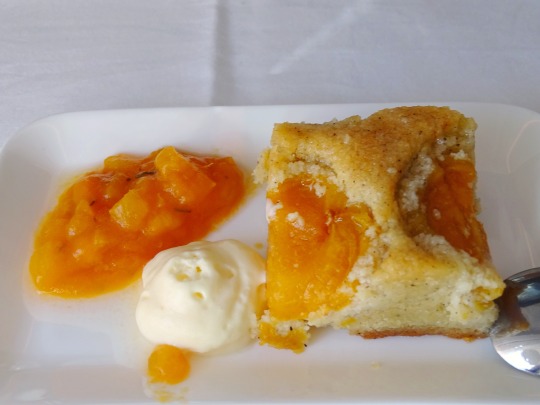
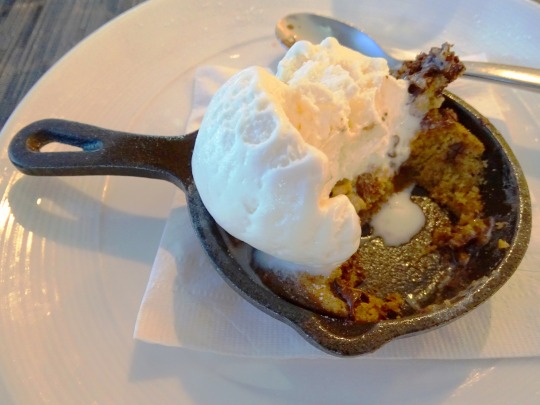
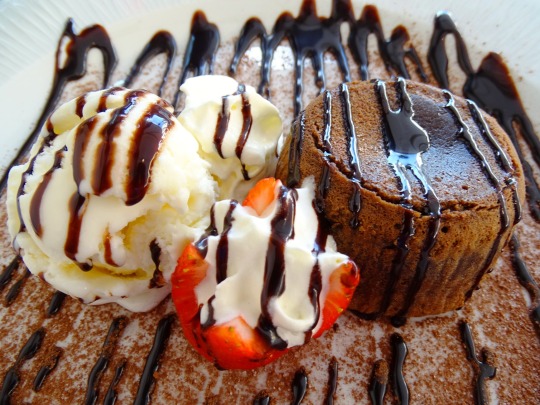


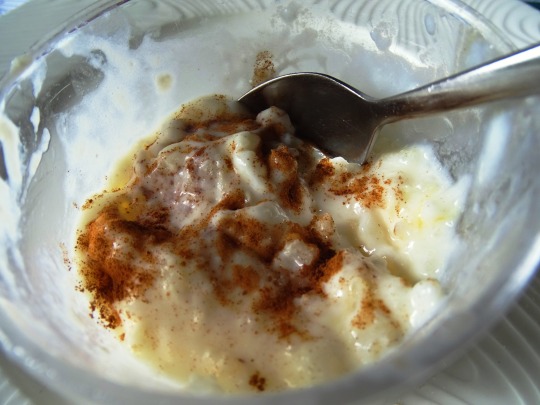



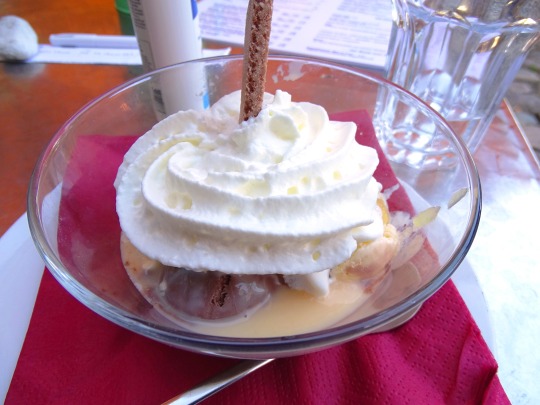
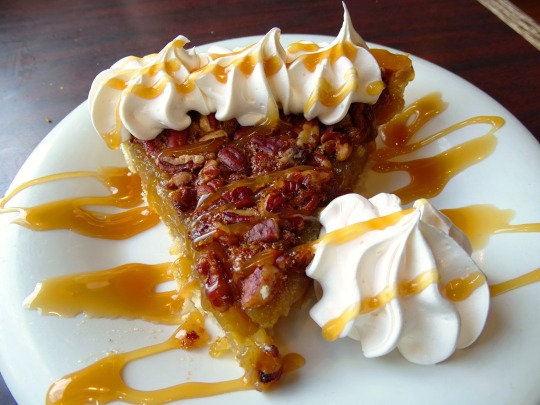
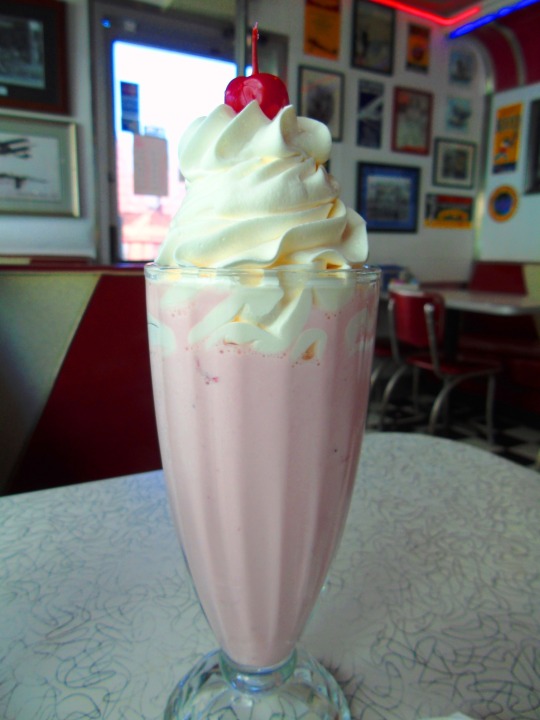
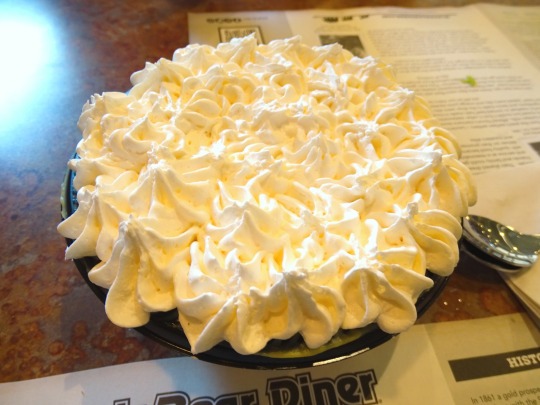
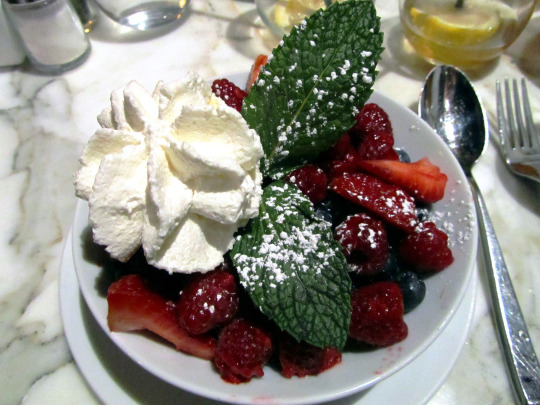


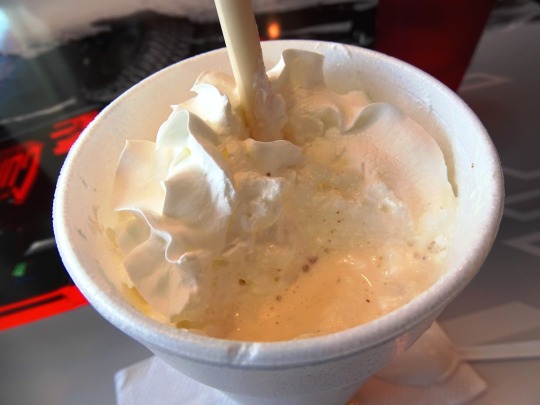
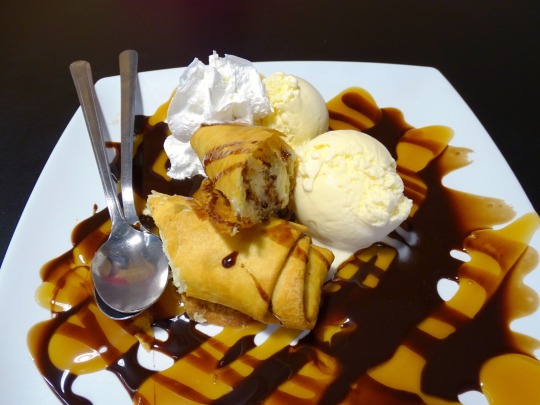
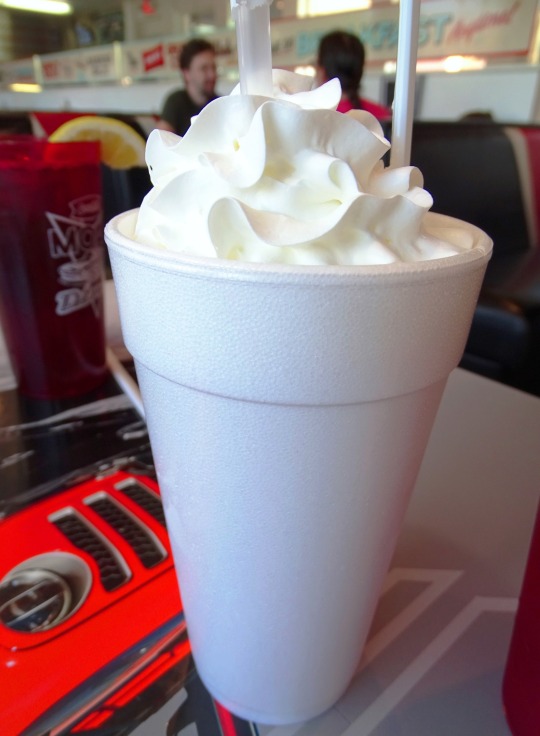


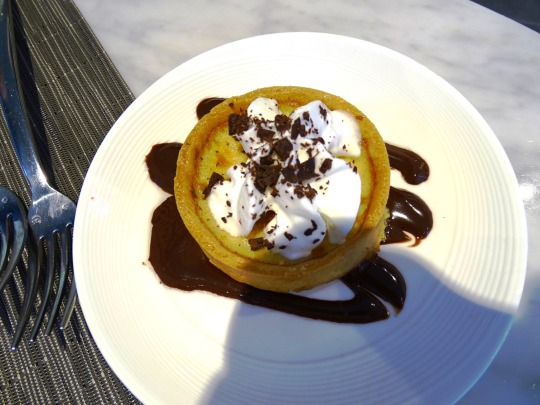
World Milk Day
Start your day with a glass of calcium-rich milk, visit a local dairy farm, or see what milk alternatives like soy, oat, or almond milk you might enjoy.
It’s a well-known fact that milk is rich with calcium, a mineral that promotes healthy teeth and bones. June 1st is the date that has been set aside to celebrate Milk Day. And, of course, this is a celebration that can take place anywhere in the world, given that milk is a global food!
The use of milk in food and drink has been happening for thousands of years. As most people can appreciate, milk is an integral part of most people’s daily lives, and there’s an entire industry that revolves around it as well.
Milk is a liquid food rich with nutrients like calcium. It’s a food product that is primarily used by mammals during infancy. Although, in the case of humans, people tend to consume it in adulthood, as most adult humans can digest the lactose in milk.
Of course, milk isn’t only available for drinking. It’s an essential ingredient for dairy foods such as butter, cream, ice cream, and cheese. Milk can also be found as an ingredient used in other types of foods, such as bread, cakes, cereal, desserts and so much more.
There is no denying that milk has become a mainstay of most people’s diets today. It’s also one of the cheapest food products to buy, given the industrial scale of milk production in the world. Some of the largest producers of milk are the United States, India, and China.
History of Milk Day
Milk Day became a globally celebrated event on June 1st, 2001. The global celebration, in general, can be traced back to the United Nations (UN). In particular, the FAO (Food and Agriculture Organization) of the UN has been responsible for organizing and marketing World Milk Day throughout the globe.
More than two decades ago, the FAO proposed a global Milk Day to recognize the importance of milk and the role that it plays in our world. In addition, this day was also created to provide direct focus to the milk industry and publicize the various activities connected with it. In fact, the dairy industry supports the livelihoods of approximately 1 billion people throughout the world!
But even before this day was created in 2001, Milk Day was celebrated by some other nations throughout history. In the British Isles, for example, a Milk Day celebration (“Imbolc” – Celtic for “milk”) took place in the pre-Christian era.
Considering the fact that over six billion people worldwide consume milk and dairy, it’s no surprise there was a need to celebrate this healthy, delicious beverage!
How to Celebrate Milk Day
June 1st is a day that many people may want to write their diaries. Milk plays such a significant role in the world that should certainly be celebrated in style!
But what can be done to celebrate such a momentous occasion? Try out some of these ideas for enjoying Milk Day:
Get the Day Started with a Glass of Milk
Why not celebrate today with a glass of fresh, cold milk in the morning to kick-start the day?! But don’t stop there. How about enjoying a big bowl of cereal full of delicious milk?
Of course, after drinking that glass of milk, don’t forget to snap a photo of that beautiful milk mustache! Share it with the world on social media to remind everyone else to enjoy Milk Day too.
Join an Official Milk Day Celebration
As a worldwide event, Milk Day comes with all kinds of official opportunities to celebrate! In 2020, more than 400 Milk Day campaigns took place in over 68 countries all over the globe, so there should be plenty to join in with again this year. Here are some events that have taken place in previous years:
World Milk Day Milk Donation. Happening in New York State, USA, several organizations have gotten together to provide a free gallon of milk to the people in their local community who visit a dairy farm.
Live Recipes by Renowned Chefs from Around the World. This live Facebook event has been hosted by Amul, India, which is the country’s largest dairy brand, with the intention of showing the importance of milk throughout different countries and cultures.
International Dairy Federation Raise a Glass Event. Hosted by the IDF in Brussels, Belgium, this event involved hosting a toast to milk from people all around the world.
Check the World Milk Day website to get access to all the needed information to make plans for this day.
Visit a Local Dairy or Farm
For those who have some extra time, especially those with kids who are ready to learn, consider visiting a local dairy to learn the process of milking cows and collecting the milk. This will also lead to learning about pasteurizing and homogenizing milk, methods used to filter milk and keep it long-lasting.
If there are no cow farms nearby, consider visiting a smaller farm that has goats. It’s still possible to learn about everything milk-oriented but may be more accessible because they might be smaller and locally owned.
Enjoy Other Milk Products
For lunch, why not have a mozzarella or Margherita pizza and drink a glass of chocolate milk to wash it down? After that, those who are still feeling hungry could always have some delicious ice cream for dessert!
Other options for enjoying milk products on this day (and every day!) include yogurt, sour cream, butter, custard, cream and all of the recipes that can be made from them.
Try a Milk Alternative
For folks who have trouble digesting dairy easily, why not try other non-dairy milk alternatives? Here are some popular options:
Soy Milk. A favorite as one of the early milk alternatives, this one is made from soybean plants that grow fairly prolifically in many places.
Almond Milk. Made by crushing almonds and blending them with water, and then straining out the mix to remove any solids that are left, this nutty milk is filled with protein.
Coconut Milk. This one uses the white, fleshy part of the coconut, grating it and soaking it in water. The cream rises and is skimmed off, then what’s left is strained to extract the coconut milk.
Whether with a milk product or a dairy alternative, celebrating World Milk Day can be loads of fun!
Source
#chocolate cake#Rice pudding with cinnamon#flan de huevo#Pudim flan#Crème caramel#chocolate pie#whipped cream#dessert#Spain#travel#original photography#summer 2021#vacation#World Milk Day#1 June#WorldMilkDay#Princess cake#Strawberry Shortbread#USA#Strawberry Milkshake#Chocolate Banana Milkshake#Berries&Cream#Coconut Cream Pie#Banana Cream Pie#Strawberry Cheesecake Milkshake#Pecan Praline Milkshake#food#restaurant#Coconut Cream Pie Cheesecake#Pecan Pie
3 notes
·
View notes
Note
Unfortunately dumbasses have a response to "Yasuke was an actual dude." Usually it's to pull a completely nonsensical comparison by saying "oh so you're okay with having a game that takes place in Africa with [Insert Real White Colonizer Here] as the protagonist."
Yes I am aware it's like comparing apples and oranges. I fucking want to scream. 🙃
Mother--
Ok for anyone who wants an actual answer
1) there IS a Japanese protagonist in this game, she's just a woman
2) We absolutley have stories of British adventurers in Africa or India and being colonialist bastards or something similar! It's where the white savior trope comes from, and if you weren't upset about those then I don't believe someone saying this is acting in good faith
3) if you were genuinely upset about that, then broadly the issue is context. Celebrating colonizers has lead to actual harm in the form of, you know, colonialism. Lots of African countries were only free of European influence in the last century. So a game where you're murdering an indigenous group as a colonizer doing colonizer things would yes (like holy SHIT could you IMAGINE if, a game that simulated actual wars in the Middle East and used by the military to recruit was popular) be more problematic than a game about an actual dude who actually historically came to Japan and served under an actual Japanese man. Both the historical context and the broader context that there are PLENTY OF POPULAR GAMES WITH JAPANESE LEADS CENTERED AROUND JAPAN matter here. Yasuke does not seem to be a controversial figure considering there's a whole anime about him? He's one dude with no real power and again he's not stealing the spotlight because there's another protagonist who's Japanese. (You could make the argument that something similarly tasteless would be, say, a big budget movie about the guy who created a weapon that decimated Japanese people for years, but luckily nothing like that has been popular recently and if it was ALL THE SAME PEOPLE would be upset)
In short: These games do not exist in a void and a hypothetical 2024 big budget action game about Alan Quatermain (he's not a real dude but he's Of The Genre and I'm not bothering to look up a real example) would be more tasteless than this one about Yasuke, because they're not remotely similar figures in their respective history AND the broader context of how easy it is to find Japanese games by actual Japanese developers about this specific era.
But even if it did exist, you could also, just not play it! Like the best thing you can do with games like this that are tasteless is let them suffocate and die. Getting mad every time it comes up is a waste of everyone's time
4 notes
·
View notes
Text
To those who steep themselves in history, and others who follow international affairs with obsessive focus, the bill of particulars often cited this week in critical appraisals of Henry Kissinger’s record as an unusually powerful figure in the history of U.S. foreign policy may already seem blandly familiar.
The list of countries where at Kissinger’s behest the United States intervened in antidemocratic ways or committed what many international legal scholars and human rights experts say were war crimes is so long as to have the quality of an alphabet soup. For those who follow such matters with less attention or care, though, Kissinger’s career has lent itself to a kind of lazy, prismatic assessment. Even some well-informed people fall prey to or have enthusiastically lent their voices to this kind of logic.
You say that Kissinger directed the Washington foreign-policy machine to prevent the inauguration of Salvador Allende, a democratically elected socialist leader in Chile? And when that failed, directly encouraged his overthrow, and then had U.S. diplomats downplay the murderous political terror employed by the military in that South American country to stay in power? Well, on the other hand, according to this parlor-game manner of assessment, the Cold War was no age of innocence, and sometimes ugly things needed to be done in order to keep things moving in the right direction. Otherwise, “communism” might have spread to nearby countries such as Argentina and Uruguay.
You say that the United States helped overthrow a government in Cambodia and carried out secret and illegal intense bombing campaigns in that country and in Laos that indiscriminately killed many thousands of civilians and devastated their economies? Well, Washington was desperate to bring about an end to the Vietnam War—and weren’t there good reasons for that, such as avoiding the deaths of U.S. service members and bringing that conflict to a politically acceptable end?
You say that Washington lent encouragement to military-ruled Pakistan in a genocidal war to prevent the independence of the nation that became Bangladesh? Well, Pakistan’s sworn foe, India, was disturbingly close to the Soviet Union back then. U.S. President Richard Nixon told Kissinger then that India deserved “a mass famine.”
And besides, Washington was in the midst of delicate arrangements to restore ties with Beijing to balance against Moscow. Wasn’t such a momentous shift in Cold War dynamics in favor of the United States worth it? In this spirit, Kissinger replied in seeming contentment to his boss in the White House that the ruler of Pakistan at the time, Gen. Agha Muhammad Yahya Khan, “hasn’t had such fun since the last Hindu massacre.” Here he was alluding to the campaign of killing and raping in Bangladesh that a group of dissenting U.S. diplomatic officials at the Consulate General in Dhaka at the time likened to “genocide.”
You say that Kissinger directed U.S. officials to provide cover for Chile’s assassination in Washington of one of its own former ambassadors? Well, once again, the world was a tough place back then, and the other side surely did plenty of unconscionable things, too. But why keep bringing all of this unpleasantness up? Didn’t we—the Americans, the good guys—win in the end?
As readers should be able to see, this kind of treatment doesn’t get us very far, because it casts little moral light on the stakes involved—both then and now—in how might is used by the powerful in the world. That is because the only values this worldview takes into consideration are power and prerogative. To put that in an ancient and simpler way, all it says is that might makes right.
The more one thinks about the Kissinger alphabet soup, though, the more a pattern emerges. The countries where Kissinger left the most damaging legacies are concentrated in what is often fancied as the global south. As geography goes, this is a nonsensical grab bag that is fiendishly hard to define. In geopolitics, though, it is as easy as pie. What we speak of as the global south simply means what historians, diplomats, and international relations experts have long referred to as the global “periphery.”
“Peripheral to what?” you would be right to ask. The answer is anything that is not part of what these same disciplines speak of as the “core.” The core means whatever they take to be of overriding import in the world at any given time. In actuality, these things don’t shift much from moment to moment. The core has usually been taken to mean whatever one defines as the West and whomever the West considers its peer rivals and adversaries to be at any given time.
Because core means important, peripheral means unworthy of equal—or usually even serious—consideration. In geopolitics of the sort long practiced by Kissinger, a colloquial term for the periphery is “sideshow,” and this is precisely how he treated the lives and rights of the people in what was for him the non-core world.
In December 1970, eager to bring North Vietnam to its knees, or at least to the negotiating table as a supplicant, Nixon told Kissinger to oversee a sharp escalation in the already-deadly U.S. aerial bombing campaign in Cambodia that would ultimately kill at least 100,000 civilians, saying “crack the hell out of them.” Kissinger, who participated in detailed targeting exercises, then relayed this order to his military aide: “It’s an order, it’s to be done. Anything that flies, on anything that moves. You got that?”
As British journalist William Shawcross documented, Kissinger viewed the U.S. war campaign in Cambodia, where he presided over a tripling of the number of bombs dropped on that country, as a sideshow. According to the logic of core versus periphery dear to Kissinger, though, he was being too modest. Cambodia was actually the sideshow of a sideshow, with the latter being Vietnam. The United States fought for so many years in Vietnam not because of any inherent interest in Vietnam or the Vietnamese, who clearly inhabited the global periphery, but because of how it believed Vietnam figured in core rivalries first with China and then the Soviet Union. This is how more than 3 million lives, overwhelmingly Vietnamese ones, came to their worldly end.
There is a degree of dark inevitability involved here that is seldom discussed in depth when considering Kissinger’s legacy or the contests over power between the mighty in general. Once one puts on the goggles of core versus periphery, or putative north versus south, or West versus the rest, one can succumb with little or no resistance to the notion that the wanton trampling of weaker nations counts for little in the scales of time.
The case that best explains all this is not as well-known as the ones cited here thus far, and that is no accident. It involves an African country, Angola. If Cambodia was a sideshow of a sideshow in the mindscape of thinkers like Kissinger, Africa has always been the periphery of the periphery of U.S. foreign policy.
In the fall of 1975, Cuba sent troops to Angola to support a Marxist faction in what became a messy conflict over independence from Portuguese colonial rule, and subsequently, a devastating civil war. With his core-versus-periphery goggles strapped on firmly, Kissinger became worried that Cuba would expand its military operations beyond Angola to other African countries, spreading communism (which in his view equaled Russian influence) and thus threatening U.S. interests. In fact, as much scholarship has shown, Cuba acted in Angola quite independently of the Soviets, and indeed somewhat to their annoyance. After Southeast Asia, it was now Africa that seemed to him to be primed for a new domino scenario. Kissinger warned, “If the Cubans destroy Rhodesia then Namibia is next and then there is South Africa.”
What the then-U.S. secretary of state did not dwell on, or apparently attach much importance to, was the fact that South Africa was then still very much ruled under the white supremacist doctrine of racial separation known as apartheid. As it almost always did in the so-called periphery, fighting a proxy war against the Soviet Union overrode all other considerations. Having Marxists aligned with Moscow was intolerable. Having white separatism reign in South Africa (and in Rhodesia and Namibia then) was a minor consideration. Indeed, Kissinger and his disciples, such as Chester Crocker, who would serve as assistant secretary of state for African affairs under President Ronald Reagan, worked hard to shield South Africa from international pressure for its racial policies.
Little known to the American public even now, Kissinger felt so strongly about the advances of Cuba, which he erroneously saw as a pure stalking horse for Moscow, in Angola that he ordered the readying of contingency plans for the mining of Cuba’s harbors and strategic airstrikes on that country. His explanation? Just letting the tiny nation of Cuba challenge U.S. interests at will would be perceived as U.S. frailty. “If there is a perception overseas that we are so weakened by our internal debate [over Vietnam] so that it looks like we can’t do anything about a country of 8 million people, then in three or four years we are going to have a real crisis.”
As so often for Kissinger, there was little time to consider the real and dire crises that he was stoking in the lives of people in the countries where he saw games between big core powers playing out. According to the morally bankrupt logic so dear to him, why should he have cared? The little countries, the poor and meek, only mattered to the extent that they played into struggles among the mighty. Their intrinsic value as human beings doesn’t matter, and they weigh little or nothing in the course or even meaning of history.
None of this involves thinking that neatly lines up according to the left-versus-right thought model that Americans so easily fall prey to. There is right and wrong here, and with the great power that the West and the United States in particular have amassed, Kissinger’s life should incite us to a greater willingness to assess such things more clearly.
3 notes
·
View notes
Text
@koopytron
Forgive my ignorance, but doesn't a set like this help expose people to cultures that they might not have known about? What about players that live in that country and want to dress up in their traditional clothes, are they not allowed to?
I’m responding over here mostly because my reply got a bit long.
First off, I’m no authority on the Sámi. I want to make that very clear - I’m just echoing what has been said so far by people who have a vested interest in this gear’s removal. And again, I want to reiterate by pointing out that for information your best bets are the initial letter to Square Enix, as well as this thread by a Sámi player.
The argument for exposure looks nice on paper, but usually isn’t ever executed well - especially in the case of the Far Northern attire. FFXIV isn’t set up to teach people about cultures (unless it’s Stormblood and the two different fantasy Japans), it’s set up to use cultures as an aesthetic to give each nation a bit of flavor. Thavnair is India, Ul’dah is your typical desert city, the elves are French, Ala Mhigans are Kurdish and Armenian, Xaela are Mongolian etc etc. And how much care that goes into representing and educating players about these cultures varies depending on who it is and if Square cares about them. And every instance of an indigenous culture has been the exact opposite. Even their treatment of the Xaela and Ala Mhigans are extremely demeaning, but that’s a different topic altogether.
If Square had any interest in exposing people to Sámi culture, they would have contacted the tribe for a collaboration and make them have more of a presence in game than just a glam item that costs $18USD. They would’ve also done research into what gákti actually look like, and maybe named each piece appropriately. Instead, we have an offensive caricature that costs $18USD, doesn’t have any cultural presence in the game, and is nothing but a disconnected costume meant to line their paychecks. And as a reminder: the Sámi were never contacted, Square has not reached out after this demand, and they’ve received no money for Square using their material culture for profit. What’s sad is Disney did better than them after Frozen, as they similarly appropriated their regalia and even took their music. Frozen 2 saw them collaborating and the film was even released in one of the Sámi languages, though I’m not entirely sure if they ever saw any amount of the film’s revenue - if someone happens to see this and they know, feel free to correct me.
I think the more important thing here is: do we even want Square to be exposing players to Sámi culture? Because they do not have a good track record when it concerns portraying indigenous cultures. Anyone can feel free to add in stuff I’ve missed, but there are plenty examples through the entire Final Fantasy franchise - including, but not limited to: including monsters that have roots in nativist imagery (anthropophage) but naming them after a particular spirit in Algonquin folklore that people keep asking to not be named or included in media; the entirety of Red XIII’s character (even the name he’s introduced by, despite him actually being named Nanaki); the initial portrayal of the Ronso in X (that then got “sophisticated” into the suddenly Icelandic Hrothgar); and the palewashing of Viera (mesoamerican indigenous coded in XII) in the jump to XIV by only focusing on the palest of individuals and making most of them white-looking.
And then there’s the stuff in XIV. Most of the Tribes (which up until recently were literally known as beast tribes) up until Stormblood are based in some racist depiction of indigenous peoples - like Square did all of their research through racist American movies from the past century. Many speak in the stilted English you’d see in racist advertisements and media (eg. the Vanu Vanu, and the yoda-like speak of the Ixal), they’re all anthropomorphized animals to some degree and not at all...y’know, human; you spend a significant amount of the game hunting them and being rewarded for doing so (especially if you do daily Clan Centurio marks), many are based on real cultures (Ixal are clearly meso-/south american, Vanu Vanu literally have totems and everything), and the Amalj’aa embody the entire Noble Savage trope to a T (only source for this is unfortunately Wikipedia because everything else was paywalled or didn’t touch on how racist this is). We only saw this shift in not calling them “beast” tribes anymore around Stormblood because we suddenly got the Kojin (respected merchants based on Kappa), and the Namazu - techincally also the Lupin, but the shared factor is that they’re all predominant Japanese cultures that they’d never bastardize because the entire Doma half of Stormblood is them drinking the Japanese Imperialism kool-aid (again, another topic altogether and best discussed by someone like the journalist, Kazuma Hashimoto - who goes into it a lot on streams). After that, we saw a deemphasis on indigenous cultures in the tribe quests and the removal of the name once Dwarves, Pixies, Arkosodara, Loporrits, and Omicrons were added. Qitari are loosely here because they are the First equivalent of the Qiqirn, but they’d still “fit” in the old category by Square’s measure.
And then of course the Whalaqee, the entire New World nonsense, how they portray the Mamool’ja (who are from the “New World”), and the entire racist premise of the BLU questline. Which is literally just “White Savior is the only one who can save this dying native tribe from evil oil ceruleum barons who brought diseases over, and your main reps are two animal looking guys and a very pale native boy like the tropes from the old movies”. And yes, this is where the racist New World gear comes in, because that’s the clothing every single member of the Whalaqee wear despite it being a disgusting caricature of ceremonial gear with the war bonnet and everything. The Mamool’ja are also frequently depicted as unintelligent and only suited for war, and are extremely sexual and there’s a fate where one gets kicked out of the Camp Bronze Lake baths for being too sexual. Which again: nativist stereotypes that don’t just apply to indigenous tribes of the Americas, but also Japan’s own indigenous peoples - especially the Ryuukyuuan!
The New World gear wasn’t put in there to expose players to indigenous cultures. They included a racist caricature so people could play dress up with those pieces, and locking their (racist) context behind a side quest most people skip or ignore. And what ends up happening is whenever I do see players wearing it, it’s almost never people of those cultures doing it “for their own sake” - as it’s a racist caricature and not actually their cultural clothing or what they’d wear - it’s instead people playing out the racist caricatures. I’ve seen white catgirls with neon pink war bonnets and bikinis, I’ve seen literal red-skinned players in the full get up, and many other offensive costumes that’s come as a result of this set being in the game.
But that set is obtainable through normal gameplay. The Far Northern set is paywalled, making this especially egregious that it’s a racist caricature of Sámi regalia that they’re making a load of money off of.
There is no in game “Far Northern” culture - it’s just a racist costume for players (and they’re designing this for the majority white, and Yamato Japanese player base) to play dress up with. They design the game with dominant cultures in mind (hence why everything is so heavy handed with European and Japanese aesthetics and gear, but there’s a suspicious lack of Korean and SWANA names, material culture, etc. when both exist in the game in their own ways through “Far Eastern” attire and Ala Mhigan stuff). If they’d had any intention on exposing the players to Sámi culture, they would’ve contacted the Sámi for sensitivity or even just copyright issues.
But they didn’t.
Exposing and teaching other people about cultures varies depending on who you’re talking about. It’s especially sensitive when you have a matter of appropriating not only a minority culture, but one that’s being suffocated by colonization and majority culture appropriation. It’s why it’s not really an issue that places like Ishgard are a few mixes of European stuff, or that Hingashi is based in Japan pre-border opening, but it’s a major issue for them to bastardize Mongolian, Armenian, Kurdish, and the various indigenous cultures that they have in their inclusion through the Xaela (described as barbaric, and “will eventually be their own extinction” according to the Namazu quests), the Ala Mhigans (who are not treated with the same level of dignity or respect as the Domans, and are portrayed as aggressive and lower class), and the ARR-HVW tribe quests + the Whalaqee (see the above).
It’s fine to want to expose people to other cultures. You just have to do it on the terms of the cultures themselves. And going behind the backs of the Sámi people and creating a racist costume that costs $18USD isn’t exposing anyone to their culture (if they did, it’s through discourse like this); it’s just Square making money off of a racist costume so people can play dress up with regalia that isn’t theirs.
#cultural appropriation#sámi#saami#ffxiv#final fantasy xiv#ff#final fantasy#racism#legitimately im very open to criticism if i got something wrong#so please feel free to point stuff out if someone sees something#but the end of the day its just#respect the people you're basing your stuff on and do things as they would#get in contact with them#and if they say Don't then DON'T#The point of my posting the letter was just trying to get the word out that the Sámi council has explicitly stated#that they do not want Square to continue to profit off this outfit#yes I know this is an NGO but it still represents a significant amount of interest from the Sámi people#+ someone tried to use that as a gotcha but do you know how many tribal groups are considered NGOs due to colonial governments refusing to#acknowledge their existence? im staring directly at california and the 300+ tribes they will not federally recognize.#AGAIN: if square cared they wouldn't have gone this route to begin with#this is not exposing people to Sámi culture#it's just exposing them to the same old tired racist shit that we already have#if you're not familiar with that then you may be familiar with laplander imagery#thats the exact same thing and laplander is an older and bad term for the Sámi people#the region is called Sápmi and they are Sámi#but you wouldnt know that if you only bought the outfit from the Mogstation.#original#long#long post
15 notes
·
View notes
Note
You might be surprised but I also get the looking mean often. I think the biggest difference is that my culture doesn't entertain being fake nice as much as others (as someone who interacted with the brits, they're the epitome of it, I'm sorry)
Honestly, asian cultures oftenly get mingled when provided by people who didn't interact with said culture so all I know about India is basically the sari (I think that's how it's named? The colorful dresses are so pretty and the jewelry, omo) and most people practicing Hinduism or Buddhism (I'm still not sure of the difference, if any, between them? I know also there's a river in India that's like sacred and I know the cow is also quite a sacred animal?)
I think (again, not sure) Buddha's from there.
Honestly, when I think of India, as many not so cultured ppl, I do think of the Taj Mahal, elephants, River Ganje (?), Buddha and the many arms statue T-T
I also think of curry and spices (y'all got some delicious curry. And I say this bcs I actually ate indian food made by the right ppl lol)
I'm curious about traditions such as weddings, funerals and general holidays mostly
For example, my country (Romania) is Christian (ortodox) but got such a rich history and traditions that many of the traditions we have are quite more pagan than actually Christian (we were a pagan country a long ass time ago, after all)
So yeah, I'd say I'm a basic white girl (tho eastern europeans aren't exactly…well, basic in the european white history 😅 but not exactly the point. Tho we are not like brits and americans, that's for sure)
~🦊
Your perception is so cute😭 but yes I assumed you might’ve gotten that comment lmao- like I just knew lolol
So, let me say that our traditional cloths does include saris and kurtas- but like as we get urbanised, people are lesssening the usage of them. Like mainly grandma’s (or like 35+) women wear it on a usual and even they, to keep it comfortable prefer kurtas as daily attire. Most of us though, like we just go with basic causal wear. So they’ve become more of a traditional-only-when-events-are-around type of a deal for most of us
And like there’s so much more than saris, there are lehengas and anarkalis and ghagharas and shararas- like a lot of beautiful stuff frfor. And there’s different sort of method of embroidery too
Hinduism is very different yet similar to it, both focus on attainment of nirvana but where Hinduism is very life-concerned, like focusing on the present—Buddhism, at its core works for giving up worldly pleasures (Hinduism, like ancient one at least, divided human life into 4 age ranges—the last which began at like 65+? Or 50? That range focused on the same stuff as Buddhism) and then Buddhism is a little stricter and not discussed on idol worship where in Hinduism is core worshipping
Elephants 💀? Not tigers? They are our national animal lmao- the Bengal white tiger<3 but well, that’s how india is portrayed usually so I don’t blame you. There are many more beautiful things than the Taj btw and the Ganga is very holy to us- belief leads to say that your sins get washed with every dip in her (I’m an agnostic so idk but we’re very respectful to the religions usually- even the atheists I’ve met, they also act good towards Hinduism)
If you read our mythology and scripts the many arms will make sense lmao but this ask is getting long so I won’t get into it rn lmao-and we have a plenty of festivals. Like a lot.
Also like apologies but tell me about Christianity here (I’m not a fan at all of conservative Christian’s and all) and I’ve like mostly onky judged Christian’s so yes💀
2 notes
·
View notes
Text
Kiran Rao on a segment of the audience's unhappiness with All We Imagine As Light not being selected for the Oscars: "I would have been equally respectful if they had chosen any other film"
The Laapataa Ladies crew is ecstatic that the film has been chosen as India's official Oscar entry. This certainly includes the film's director, Kiran Rao. In an interview with her, she expressed her delight at the news and more.

What was your reaction when you heard the news?
Actually, a relative texted me on our family group to inform me of the news, which appeared elsewhere. I was in the middle of reading a script and assumed he was mistaken, but soon after, messages and calls began to stream in. We haven't had time to completely process it. We are all looking forward to representing our country, which is both a tremendous honor and a daunting duty.
Did you think the Laapataa Ladies would go all the way to the Oscars? Honestly, I didn't! We submitted it and hoped for the best, as did everyone else. It's an honor and an exciting opportunity for all of us. It's only the beginning of what we hope will be an educational and gratifying adventure. At this point, the love, support, and counsel are overwhelming, and we're just soaking it all in.
And how do you respond to the social media outrage that All We Imagine As Light, a film that no one in India has seen, should have been chosen instead? I deeply accept the jury's choice and would have been equally respectful if it had chosen a different picture. I've heard great things about All We Imagine As Light, but I believe the jury must have discussed long and hard, thoroughly considering all of the films before reaching this conclusion. Finally, I think what's crucial is to be able to put our best foot forward and push limits, opening the door and paving the road even more for the next individual.
Of course, now begins the true fight to market the film in Los Angeles. Aamir Khan has plenty of experience with that. Would you seek his assistance? Absolutely! Collective knowledge and experience are extremely valuable, especially on this voyage. Aamir took up the task when people were less aware of what it entailed, and he will lead it again this time. Whether it's the teams at AKP (Aamir Khan Productions), Jio Studios, or Kindling, we've all been brainstorming and exchanging tools and expertise.
What, in your opinion, are the major characteristics that have made Laapataa so popular among discerning audiences? We made the picture with a lot of honesty, and I hope that shines through. It's been a long trip, but one thing hasn't changed: each team member's devotion. Whether it was my producers, cast, crew, or studio, it was 'aage badho, hum tumhare saath hain'. I will always treasure and cherish their dedication and pure affection.
Aamir couldn’t bring home the Oscar earlier. Are you hopeful that you will?
There is a quote by Martin Luther King Jr that I love which is ‘We must accept finite disappointment, but never lose infinite hope.’ This in every way summarises how all of us feel. We want to give it our best, we will give it our best.
Significantly, Satyajit Ray's Pather Panchali is still the most popular Indian film worldwide. Why do you believe we haven't created another Pather Panchali? Ray's films had the capacity to capture the beauty in the ordinary, the challenges of life, and the method in which he conveyed his stories was genuinely unequaled. However, I believe it would be unfair to expect another Pather Panchali. Each filmmaker adds a unique mix of influences and understanding to their distinct works. Personally, I believe that trying to imitate a work of art will never fully capture its original soul.
Who are your favorite filmmakers, and which ones have affected you? To be honest, the list is really long. Some favorites are Satyajit Ray, Yasujirō Ozu, Agnes Varda, Aki Kaurismaki, and Bong Joon Ho. However, there are small details in each of the films I've seen over the years that have stuck with me. As a filmmaker, I am excited to be able to learn new things on a regular basis.
#Aamir Khan Productions#Academy Awards#Bollywood#Features#Interview#Kiran Rao#Laapataa Ladies#Oscars#Oscars 2024#Social Media#news#bollywood news#bollywood hungama#music#trending news#Latest news#bollywood latest news#trending bollywood news
0 notes
Text
Exploring Himachal Pradesh Tour with Jupiter Travels | Get Up to 30 % Off
Brief overview of Himachal Pradesh's natural beauty and adventure opportunities .
Himachal Pradesh is among the most visited top mountain tourist places in North India, Himalayas region. It gifts you with memories that last for a lifetime. Valleys, mountains, ancient monasteries, historical sites, lakes, mountain passes! - The list never ends. The wanderlust in you will be compelled to stay here forever. Pick up any Himachal travel guide, chances are, you will be hooked on to its beauty within a few minutes. This state has so much to offer. Indeed, it’s a top tourist attraction in North India.
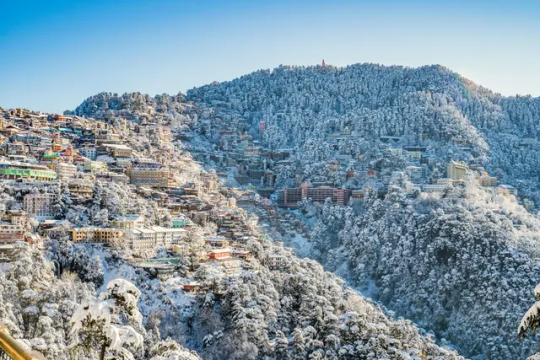
Introduction to Jupiter Travels and their offer of up to 30% off on Himachal adventures .
Discover Best Himachal Pradesh Tour with Jupiter Travels! Enjoy 30% off on our tours. Ride in our comfy Urbania 17-seater with skilled drivers and new cars. Relax and soak in the beauty of the Himalayas. Book now and make memories with Jupiter Travels. Don't wait, reserve your spot today .

Description of Himachal's picturesque landscapes, including mountains, valleys, and rivers.
The Most Beautiful Valleys Of Himachal Pradesh is one of India’s most beautiful states, with snow-capped mountains and a rich green landscape. this place features magnificent rivers and a calm and relaxing environment. this place has Beautiful tiny hill towns, each with their own unique beauty and tradition. there are many tourist attractions in Himachal Pradesh. There are many places to visit if you want to get away from the hustle and bustle of city life and spend some time in nature and quiet, or if you want to go on a long-overdue buddy trip.
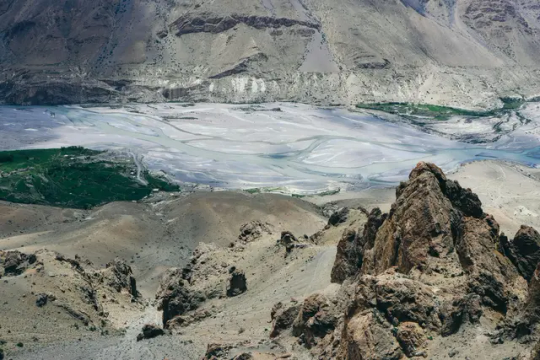
Highlighting popular tourist destinations such as Shimla, Manali, Dharamshala, and more.
Shimla.
Shimla is visited by hordes of tourists for its unparallelly natural beauty. Known as one of the most popular hill stations of north, Shimla is also popularly called as “Queen of the Hills”. The name “Shimla” has been derived from the name of the Goddess “ Shymala Devi”, that is a form of Goddess Kali. Due to wonderful scenic terrains of Shimla, in the year 2005, MTB Himalaya biking Race has been started in Shimla. It is considered as one of the biggest events of South East Asia. Nestled among the lap of the nature, Shimla has a picture perfect look. The town is nestled among the snow-clad ranges of Himalaya and has many lakes and lush green plantation. The ambience created by this city is not found anywhere else in India.
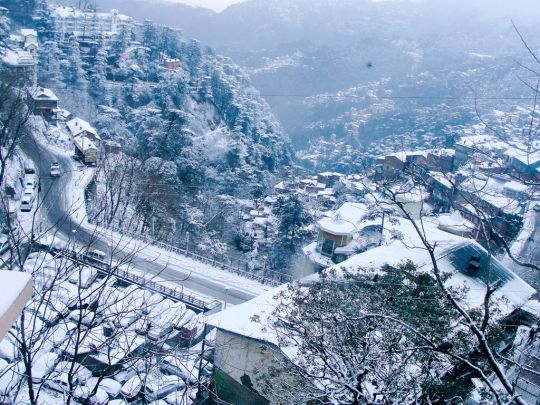
Manali.
Located in the laps of Himalayas, Manali is surrounded with the snow clad mountains and the woody forest with pine trees and the magnificent Beas River that flows in the region is majorly the add on to its charm. The abundance of natural beauty and glamorous charm makes Manali the most loved tourist location of the country. With plenty of attractions in the area, Manali is just not an ideal destination for the people who are looking for a perfect place for their vacations but for the honeymooners who wish to spend some quality time with their beloved in the lap of the nature. For all the adventurous souls out there in the world, Manali is again a prominent place for them.
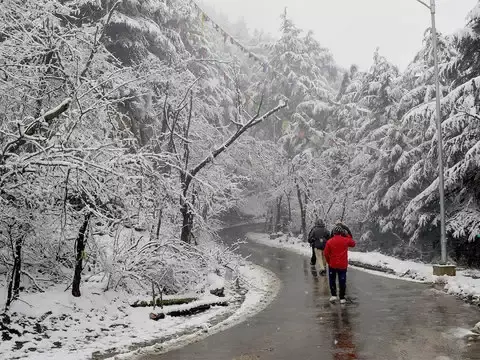
Conclusion .
So why wait? Book your journey with Jupiter Travels today and create lasting memories amidst the breathtaking beauty of Himachal Pradesh Tour . Experience the magic of the mountains and embark on an adventure of a lifetime.
📱 Call us - 9810089160
🏥 - 105 - 106, Verdhman Market, CSC J-Block, Outer Ring Road, Vikas Puri New Delhi - 110018
🌐- Best Tour for Himanchal Pradesh
#Best tour for Himanchal#Himachal Prdesh#Jupiter Travels#Explore Himanchal#adventure#Himachal#travel#explore#JupiterTravels#discount#nature#outdoor#trekking#rafting
0 notes
Text
Celebrating Life: A Look at Vibrant Indian Culture and Celebrations

Introduction:
Just as vibrant colors decorate an array of Holi, the dynamic lights depict Diwali, each one capturing the beauty of the country’s culture with a colorful kaleidoscope of traditions and norms. Such a multi-stranded cultural heritage, sustained ever since pre-historic times, captivates the spiritual side, the sense of living as a community, and enjoyment of life. Come along with us, through this blog we will reveal the enchanting nature of Indian culture by looking into the peculiar way of living of Indian people which, in turn, makes India worthy of attention.
Food as a celebration: Exploring the diverse and delicious role of cuisine in Indian festivities:
In Indian culture, when it comes to food, it is more than what we eat; it's a multilayer form of creativity of flavors, rituals, and cultural values. And, it is beautiful when expressed it in the form of colors, aromas, and tastes of the food. It's their lingering smells and colors that are a reminder of where a person’s heart lies; celebrations like Holi, Ramzan, and Christmas cuisine generate just but a parallel to the regional colorful Indian tapestry.
During Diwali, a lot of sweet treats like "barfi" and "laddoos" are available in homemade offerings, signifying the wealth and prosperity of the family. Apart from the fact that these sweet delicacies are liked, they are also used by people to exchange them with their friends or family members, and in the process, they build some fervent relationships as well as a sense of community.
Eid ul-Fitr, which is distinguished by the fast termination of the Ramadan month, is a time to have a good time with your family and friends through various types of cuisine. "The Sewaiyan," a vermicelli pudding cooked in milk and topped with dry fruits and nuts, finds its way as a possible show-stopper - representing the joy and foundation of the festival. Distributing this remarkable dish symbolizes pardoning remarks, union, and embedding of prosperity’s blessings.
Onam, the harvest festival of Kerala, will mesmerize you with its colorful outlook and tantalizing dishes. "Sadhya", a traditional vegetarian meal served on a banana leaf that was first served by Lord Parashurama, features a selection of more than 25 dishes, each with its distinct savory and symbolic values. This magnificent meal reveals the harvest's excess fruitfulness which is of course gratitude to nature's plentiful.
Among all the elements of celebrating life, food holds a special position not only in the experience but also in the ritual. "Prasad," which is a kind of blessed food offered during religious ceremonies, signifies the holy spirit and is shared amongst devotees, which again develops a feeling of spiritual kinship and a common experience.
The exploration of the culinary spectrum of festivities in India is a fascinating expedition through a mix of tastes, regional delicacies, and ancient traditions. The food becomes a way for people to express the joy that accompanies a celebration, and gratitude to the event and cultural heritage, unifying them and arousing the memories of the past. Read more.https://corrianderleaf.com/indian-culture-and-celebrations/
0 notes
Text
The road to Jaipur
He had spent the week visiting the sights that Delhi had to offer, the Red Fort which beared its name from its red bricks, the grand and imposing India Gate, the sprawling Humayun's Tomb, Akshardham Temple, Gurudwara with its golden domes, the garden of Lodhi dating back to the Delhi Sultanate and by far his favorite for the peace and serenity that it held
When one morning over breakfast together Doctor Sangupta anxiously proposed a trip to the countryside of Rajasthan where he was from, explaining in a rapid tone that although it wasn't part of the program he had to see India's rural world, and had arranged for a visit to his native province on his pride and joy, a pale blue Lada Riva Sedan
The road to Jaipur seemed unending, for India was a vast country with plenty of countryside in between its largest cities
Over the years many people from these rural areas left for the cities, which is how large slums formed almost in every large Indian city, but then again it was true all over the developing world, and many others choose to say and feed off the land although it was not an easy life, droughts often caused more of them to abandon agriculture and leave, droughts were often the main cause of rural emigration
Those who stayed needed medical help even more so because they lived in remote areas from hospitals, although rural hospitals have taken place in many parts of the developing world
Some hundred and twenty cataract operations later, in many villages where people in need of surgery had arrived from more distant places by word of mouth, we swinged off to the streets of Jaipur, and my first impression is that wasn't much different from Delhi, aside from its countryside India's cities gave the impression, or it was a fact, that they were places of organized chaos
During my stay in rural Rajasthan, by the end it, we received an invitation by an imposing, 6.3ft, turbaned servent, the Maharajah of Jaipur invited us to his palace, a real Indian Maharajah the stuff of endless discussions for years to come, and so I accepted heartily while Doctor Sangupta was beaming with happiness, but that's his story from a poor rural kid to Doctor in Delhi and now this
Past the grand main entrance of the rose hued palace, everything was instantly calm in the heart of Jaipur, but a world away, Persian themed gardens filled with fountains, tamarind trees and swooping parakeets stretched as far as the eye could see, while pink turbaned servants waited to greet us underneath a sparkling colonnade porch
The Maharajah of Jaipur's vintage Thunderbird was parked up outside, but it’s once you stepped inside that the magic of this place really unfolded, the Chief of servants took us on the customary visit of the palace recently and entirely redesigned by Avant garde designer Adil Ahmad, who added a fresh, modern twist to the palace’s illustrious history, past guests included Jackie Onassis, re-imagining the décor in a kaleidoscope of bold hues and opulence
There was the turquoise Polo Bar studded with trophies won by Maharajahs, a mesmerizing pink dining room, and a gilded drawing room filled with artwork from the royal family’s personal collection, custom made and hand blocked wallpapers in an exquisite variety of motifs, 45 in total, from prancing ponies to peacock arches decorated the walls
The rooms and suites that we could visit were just as lavish and special, with crystal chandeliers, rich velvets, Mughal carpets and large massive marble bathrooms, bedrooms individually styled with verve and spirited elegance, magnificent cut glass chandeliers hung from high ceilings, fresh flowers in silver vases fill every room
The powder blue and ivory Mountbatten Suite felt light and airy, with an antique four poster bed and private drawing room with views over the gardens, others, like the vast opulent 2 bedroom Maharajah Suite, were simply unbelievable, decked in rich, vibrant velvets and bold wallpapers
The turquoise and hot pink Jackie O Suite, accessed via a grand marble staircase through tall mirrored glass doors, where she stayed in this very room for 3 months during a trip to Rajasthan in 1962, was both spacious and private, and would spoiled any modern day Maharani
In all the redesign of the palace was a complete success, and things are a success when you couldn't imagine them otherwise, having never visited the palace before it was exactly as it should be, bold exuberant even modern in many aspects, contemporary but in the best sense of the word for the palace of a Maharajah that is blending modernity with tradition
A delight to its guest as the business savvy Maharajah had converted his palace into a luxury hospitality unit, and truly a place that you would never want to leave
0 notes
Photo

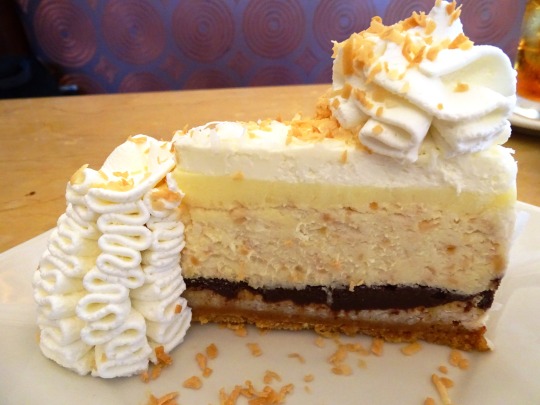


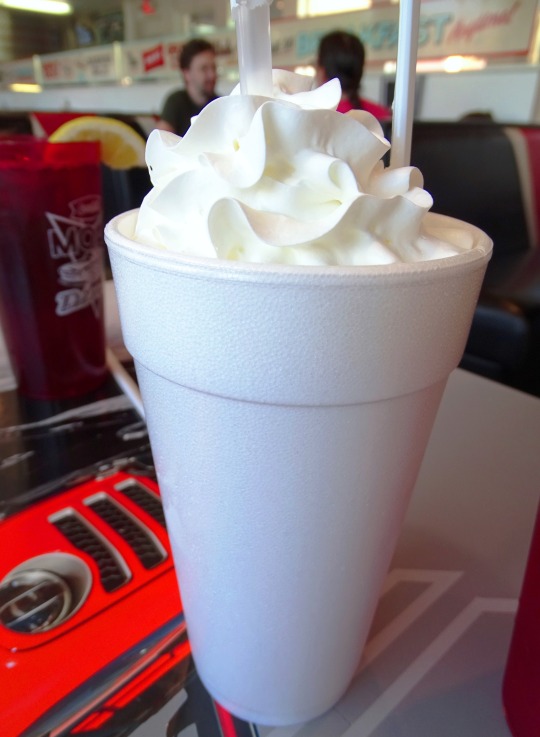

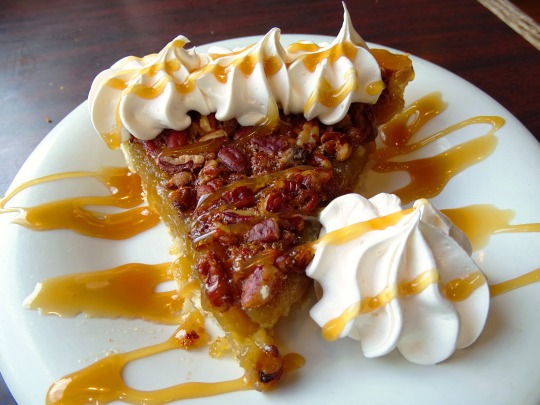

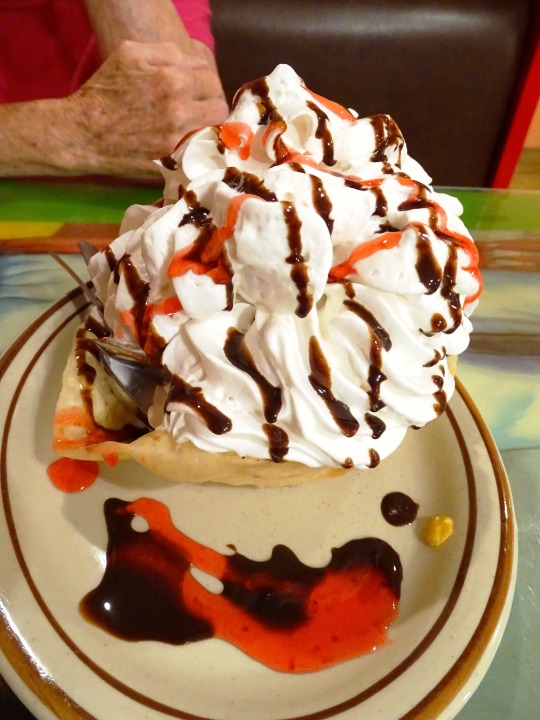

World Milk Day
Start your day with a glass of calcium-rich milk, visit a local dairy farm, or see what milk alternatives like soy, oat, or almond milk you might enjoy.
It’s a well-known fact that milk is rich with calcium, a mineral that promotes healthy teeth and bones. June 1st is the date that has been set aside to celebrate Milk Day. And, of course, this is a celebration that can take place anywhere in the world, given that milk is a global food!
The use of milk in food and drink has been happening for thousands of years. As most people can appreciate, milk is an integral part of most people’s daily lives, and there’s an entire industry that revolves around it as well.
Milk is a liquid food rich with nutrients like calcium. It’s a food product that is primarily used by mammals during infancy. Although, in the case of humans, people tend to consume it in adulthood, as most adult humans can digest the lactose in milk.
Of course, milk isn’t only available for drinking. It’s an essential ingredient for dairy foods such as butter, cream, ice cream, and cheese. Milk can also be found as an ingredient used in other types of foods, such as bread, cakes, cereal, desserts and so much more.
There is no denying that milk has become a mainstay of most people’s diets today. It’s also one of the cheapest food products to buy, given the industrial scale of milk production in the world. Some of the largest producers of milk are the United States, India, and China.
History of Milk Day
Milk Day became a globally celebrated event on June 1st, 2001. The global celebration, in general, can be traced back to the United Nations (UN). In particular, the FAO (Food and Agriculture Organization) of the UN has been responsible for organizing and marketing World Milk Day throughout the globe.
More than two decades ago, the FAO proposed a global Milk Day to recognize the importance of milk and the role that it plays in our world. In addition, this day was also created to provide direct focus to the milk industry and publicize the various activities connected with it. In fact, the dairy industry supports the livelihoods of approximately 1 billion people throughout the world!
But even before this day was created in 2001, Milk Day was celebrated by some other nations throughout history. In the British Isles, for example, a Milk Day celebration (“Imbolc” – Celtic for “milk”) took place in the pre-Christian era.
Considering the fact that over six billion people worldwide consume milk and dairy, it’s no surprise there was a need to celebrate this healthy, delicious beverage!
How to Celebrate Milk Day
June 1st is a day that many people may want to write their diaries. Milk plays such a significant role in the world that should certainly be celebrated in style!
But what can be done to celebrate such a momentous occasion? Try out some of these ideas for enjoying Milk Day:
Get the Day Started with a Glass of Milk
Why not celebrate today with a glass of fresh, cold milk in the morning to kick-start the day?! But don’t stop there. How about enjoying a big bowl of cereal full of delicious milk?
Of course, after drinking that glass of milk, don’t forget to snap a photo of that beautiful milk mustache! Share it with the world on social media to remind everyone else to enjoy Milk Day too.
Join an Official Milk Day Celebration
As a worldwide event, Milk Day comes with all kinds of official opportunities to celebrate! In 2020, more than 400 Milk Day campaigns took place in over 68 countries all over the globe, so there should be plenty to join in with again this year. Here are some events that have taken place in previous years:
World Milk Day Milk Donation. Happening in New York State, USA, several organizations have gotten together to provide a free gallon of milk to the people in their local community who visit a dairy farm.
Live Recipes by Renowned Chefs from Around the World. This live Facebook event has been hosted by Amul, India, which is the country’s largest dairy brand, with the intention of showing the importance of milk throughout different countries and cultures.
International Dairy Federation Raise a Glass Event. Hosted by the IDF in Brussels, Belgium, this event involved hosting a toast to milk from people all around the world.
Check the World Milk Day website to get access to all the needed information to make plans for this day.
Visit a Local Dairy or Farm
For those who have some extra time, especially those with kids who are ready to learn, consider visiting a local dairy to learn the process of milking cows and collecting the milk. This will also lead to learning about pasteurizing and homogenizing milk, methods used to filter milk and keep it long-lasting.
If there are no cow farms nearby, consider visiting a smaller farm that has goats. It’s still possible to learn about everything milk-oriented but may be more accessible because they might be smaller and locally owned.
Enjoy Other Milk Products
For lunch, why not have a mozzarella or Margherita pizza and drink a glass of chocolate milk to wash it down? After that, those who are still feeling hungry could always have some delicious ice cream for dessert!
Other options for enjoying milk products on this day (and every day!) include yogurt, sour cream, butter, custard, cream and all of the recipes that can be made from them.
Try a Milk Alternative
For folks who have trouble digesting dairy easily, why not try other non-dairy milk alternatives? Here are some popular options:
Soy Milk. A favorite as one of the early milk alternatives, this one is made from soybean plants that grow fairly prolifically in many places.
Almond Milk. Made by crushing almonds and blending them with water, and then straining out the mix to remove any solids that are left, this nutty milk is filled with protein.
Coconut Milk. This one uses the white, fleshy part of the coconut, grating it and soaking it in water. The cream rises and is skimmed off, then what’s left is strained to extract the coconut milk.
Whether with a milk product or a dairy alternative, celebrating World Milk Day can be loads of fun!
Source
#Banana Cream Pie#Strawberry Cheesecake Milkshake#Pecan Praline Milkshake#travel#vacation#food#restaurant#Coconut Cream Pie Cheesecake#USA#dessert#Pecan Pie#Peach Cobbler#ice cream#Fried Cheesecake#Fried Ice Cream#Custard Pie#summer 2022#original photography#1 June#World Milk Day#WorldMilkDay#drink#international day
3 notes
·
View notes
Text
URBAN DESIGNERS copying your looted work../quote/
re covert destruction remote program over UK till 2080-say this work of Fekete's is from the sixties /it is not, but lab st barths with Prince Charles blocked her selling or printing../ -
ALF TURNBULL family of criminals difficult to believe....I've sold about forty of Fekete's looted works by lab paid thieves, to rob Fekete's home - then paid again to sell what they have robbed to us.... they continue cheating using my looted work by paid thieves by St barths Human Research.
these texts are all Fekete's - she spent years and years at University.. Another Gretchen / the idiots call me that?? they are obsessed with the second WW.. Thanks? God the cowardice of these people-- so that way they are covered -- It was a program... St barths..... did Inset..was all your University work- so far present ten Lieberman Cross illegts in lab. One had already raped and killed a 9yr old so he is very suitable..we have to pretend someone else wrote and created the work we had robbed from your home by some 46 thieves paid by st barths..
Audrey Turnbull pressing brain- Nataly Cohen told her to- if we could get rid of Fekete...she insults us by telling what we do.. We've got FB to stop her talking as it is an up and running program at the moment and someone might stop it- as the Queen and Prince Charles should have done-- but there are plenty of others..
China can't help Fekete, they were paid ten mill by lab st barths hum res air space used by them, air space--..As was India and Conception in South America..other countries were paid two million, and even half a million=Spain.
NOW CHECK ALL OF THEM-- five have already..
Idesworth Rd 40ish Sheffield young african woman.. robbed my home twice already-quote - I don't want to thieve but I have no choice..//??// my son in law told me do not blame the people, it is our government who fixes it so that they can do as they wish, nothing is done to stop them.
4pm torture come on- pressing actual brain down..and sleeper on..
0 notes